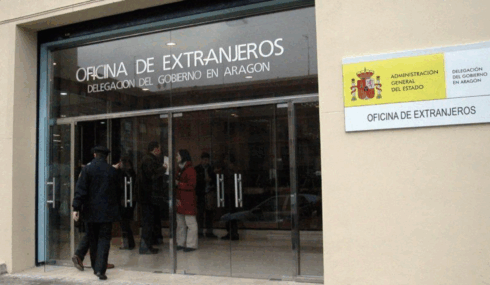SPAIN’s ‘golden goose’ tourism sector – which fuels one in eight jobs and more than a tenth of the economy – is about to face a shake-up.
Prime Minister Pedro Sanchez has unveiled a new national plan that promises to reshape how Spain manages its record-breaking visitor numbers, with a particular focus on holiday rentals and their impact on housing.
Unveiled at the Turespaña convention in Caceres, the Tourism Strategy 2030 sets out what Sanchez calls a ‘paradigm shift’ – a plan to modernise the industry, protect residents, and ensure the country ‘does not become a victim of its own success’.
READ MORE: Health alert as new types of coronavirus are found in bats in Spain
At the centre of the strategy is a new Tourist Housing Observatory, which will map tourist pressure by neighbourhood, identifying areas where short-term rentals are pushing locals out and driving up prices.
Officials say it will also guide new rules on temporary and seasonal lets, to prevent landlords from rebranding long-term homes as tourist stays.
Sanchez said 54,000 illegal holiday apartments have already been removed from booking platforms and pledged ‘continued progress’ on enforcement.
“Tourism fills our cities with life,” the prime minister said, “but it cannot empty our neighbourhoods of their residents.”
READ MORE: Wine tourism in Spain boosted industry revenues by almost 10% in 2024
For many expats – especially those renting out property in hotspots like the Costa del Sol, the Balearics and Valencia – the changes could bring tighter licensing checks, steeper fines and fewer grey areas between national and local regulations.
The government also aims to increase transparency, with clearer data-sharing between town halls and booking sites.
Tourism bosses have long warned of an overheated market. Last year Spain welcomed a record 94 million visitors, who spent more than €126 billion.
READ MORE: New traffic signs in Spain: What drivers should know in 2025
The sector generates 12.3% of GDP and 13.2% of employment. Sanchez hailed it as an ‘extraordinary success’ but warned that growth cannot come at the cost of liveability.
Over €3.4 billion in public investment has been earmarked to support digitalisation and smarter management.
A new ‘intelligent destination’ data platform will help small and medium-sized businesses make smarter use of visitor data – predicting flows, adjusting prices and managing crowds.
Spain is also looking further afield.
While keeping its core British and German markets stable, the government wants to attract more long-haul travellers from Japan, China and Latin America, part of a push to diversify sources of revenue and reduce dependence on European demand.
The strategy also pushes to fund rural destinations and promote off-season travel. Arrivals in low season are now growing almost three times faster than in high season.
Beyond the clampdown on rentals, the plan calls for a better deal for workers, linking job quality with destination quality.
Average pay in hospitality has risen 18% since 2018, while short-term contracts have fallen sharply, but the government admits ‘progress is relative’ and says the goal is to make tourism work year-round rather than just in summer.
The government also aims to spread tourism beyond the traditional beach season, with off-season arrivals now growing almost three times faster than summer figures.
Spain’s Tourism Strategy 2030 marks the strongest signal yet that the era of unregulated short-term rentals is coming to an end. The boom years may continue, but the free-for-all is over.
Click here to read more Explainer News from The Olive Press.









With climate change and global warming I would not be surprised to see the current “high season” relegated to low, and vice versa.Long-haul travellers will need more hotels . Are hotel chains gearing up?
Please explain to the owners who have invested their hard earned money, upkeep expenses and time, how exactly short term rentals have been “a free for all”??